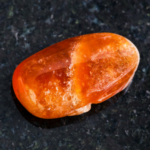When people think of pilgrimages in France, their minds often turn to Lourdes, with its grotto and its great processions. Yet there is another place, quieter but no less profound, that calls the faithful to walk in the footsteps of one of the most beloved saints of modern times—Saint Thérèse of Lisieux, the “Little Flower of Jesus.” The Basilica of Lisieux in Normandy is not only a monument to her life and legacy, but also a living center of devotion that draws pilgrims from around the world. To visit Lisieux is not only to admire a grand building, but to experience a personal journey into simplicity, trust, and love.
Who Was Saint Thérèse of Lisieux?
Born in 1873, Thérèse Martin grew up in Lisieux, a small town in northern France. She entered the Carmelite convent at the age of fifteen, living a hidden life of prayer until her death from tuberculosis in 1897 at just twenty-four years old. Despite her short life and limited public presence, Thérèse’s spiritual writings—especially The Story of a Soul—became immensely influential. Her “Little Way” of holiness, based not on grand gestures but on small acts of love and trust in God, has inspired millions.
Canonized in 1925, she is now a Doctor of the Church, one of only a handful of women to bear that title. Her parents, Louis and Zélie Martin, were also canonized in 2015, making Lisieux a rare place where a whole family is honored for their sanctity.
The Basilica of Lisieux: A Place of Pilgrimage
Construction of the Basilica of Saint Thérèse began in 1929 and was completed in 1954. Built on a hill overlooking the town, the structure itself is immense, modeled after the great pilgrimage churches of the early twentieth century. With a dome that rises 95 meters, it dominates the skyline, symbolizing the far-reaching influence of the saint known for her small and hidden life.
Inside, the Basilica is decorated with mosaics, marble, and stained glass, all of which reflect Thérèse’s spirituality. Unlike older Gothic cathedrals that emphasize vertical height and distance, Lisieux’s Basilica welcomes pilgrims with warmth and light. The art is filled with images of Thérèse’s words, her “Little Way,” and her mission of spreading love to the world.
Beneath the main church is the crypt, a quieter space where pilgrims can reflect in silence. The atmosphere there is more intimate, reminding visitors of the simplicity that defined Thérèse’s life. Nearby is the Carmelite convent where she lived, and the Chapel of Saint Thérèse, where her remains are preserved for veneration. Pilgrims often walk between the Basilica, the convent, and her family home (Les Buissonnets), tracing the path of her short but profound life.
What Pilgrims Experience
Every pilgrimage to Lisieux is deeply personal. Some come with petitions, asking Saint Thérèse’s intercession for healing or peace. Others come in thanksgiving for prayers answered. Many arrive simply to encounter a saint whose spirituality speaks to ordinary people in a busy, complicated world.
Pilgrims often describe three main experiences:
- A Sense of Simplicity. Unlike some places of devotion that overwhelm with grandeur, Lisieux—despite its enormous Basilica—feels simple and approachable. Pilgrims find that Thérèse’s “Little Way” resonates with their own daily struggles.
- A Family Spirit. Because her parents and sisters also lived in Lisieux, a pilgrimage here is not just about one saint, but about the witness of an entire family. Many visitors find encouragement in this, seeing holiness not as something distant, but as something possible in ordinary family life.
- A Renewed Trust in God. Thérèse’s spirituality is not about complicated theological systems, but about trusting God as a child trusts a parent. Pilgrims often leave Lisieux with a renewed sense of peace and faith.
The town also hosts international gatherings, Masses, and processions, especially on October 1st, her feast day. On those occasions, the Basilica is filled with music, prayer, and people of every language.
Planning a Pilgrimage to Lisieux
For those considering a pilgrimage, Lisieux is relatively easy to reach. Located about 120 miles (200 kilometers) from Paris, it can be accessed by train in about two hours. Many pilgrims combine a trip to Lisieux with other sacred sites in France, such as Lourdes or Mont-Saint-Michel.
Best Time to Visit. While Lisieux can be visited year-round, the main pilgrimage season runs from spring to autumn. October 1st, her feast day, draws especially large crowds. If you prefer quiet reflection, a visit in the winter months may be more suitable.
What to See.
- The Basilica. Spend time both in the main sanctuary and in the crypt. The mosaics, especially those illustrating Thérèse’s writings, are worth study.
- The Carmel. The convent where she lived includes the chapel with her reliquary.
- Les Buissonnets. Her childhood home is preserved as a museum and gives an intimate glimpse into her early years.
- The Tomb of Saints Louis and Zélie Martin. Her parents’ remains are venerated at the Basilica of Saint Thérèse.
Pilgrimage Practices.
- Attend Mass or Vespers at the Basilica or Carmel.
- Pray at the tomb of Saint Thérèse, asking for her intercession.
- Walk prayerfully between the sites, reflecting on the “Little Way.”
- Take time in silence in the crypt, where many pilgrims experience a profound closeness to God.
Practical Tips. Lisieux is a small town with modest accommodations ranging from hotels to pilgrim hostels. English is spoken in most religious sites, but learning a few French phrases can enrich the experience. For those traveling as a group, the Basilica offers pilgrim services and guidance.
Lessons for the Pilgrim
A pilgrimage is more than travel; it is a journey of the heart. Walking in Lisieux reminds us that holiness is not found only in distant mountains or in heroic deeds, but in the daily choices of kindness, patience, and trust. Saint Thérèse herself never traveled far—she remained in her convent her entire adult life—yet her influence extends across the globe. This paradox teaches pilgrims that the greatest journeys are often inward.
Some who come to Lisieux hope for a miracle, and many leave with something even greater: a new vision of how to live. The “Little Way” is not about doing great things, but about doing small things with great love. Pilgrims often return home seeing their ordinary lives differently, as opportunities for grace.
Conclusion: Walking with the Little Flower
The Basilica of Lisieux stands as a monument to a saint who would have preferred anonymity. Yet its grandeur does not contradict her humility—it magnifies it. It shows how the life of a young woman who died unseen in a convent can touch the hearts of millions.
A pilgrimage to Lisieux is not only about honoring Saint Thérèse, but about learning from her. Pilgrims who walk through the Basilica, pray at her relics, and sit in silence in the crypt find themselves invited into the same trust she lived by. They leave not only with memories of a beautiful church, but with a deeper sense of what it means to love God in the small, hidden corners of daily life.
For those who make the journey, Lisieux is not an end, but a beginning—a step on the pilgrim’s path of faith, led by the Little Flower who continues to scatter her roses across the world.






